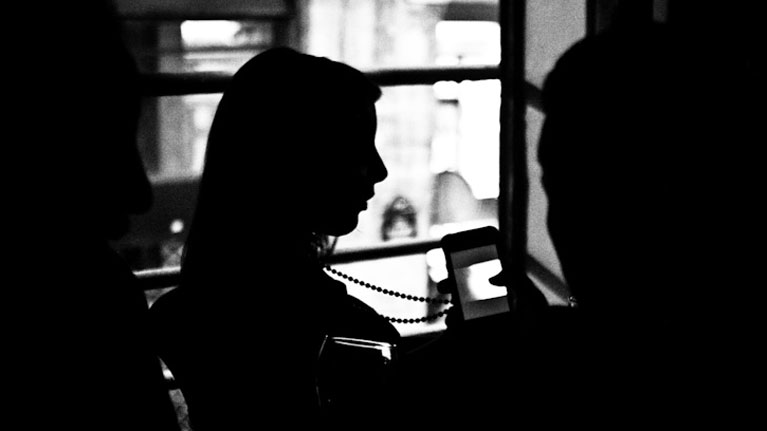Women in Jail March 1, 2023
A recent research project by the Vera Institute of Justice offers lessons for jail systems around the country on the dangers of criminalizing women’s poverty.
The picture for women in America’s jails remains troubling. Women in the United States only make up 4% of the world’s population, but the United States itself incarcerates 30% of the world’s population of women behind bars.
A stark example of the challenge in Buncombe County is that most of the women who were incarcerated at the Buncombe Country Detention Center in 2020 hadn’t even been convicted of a crime. More than two-thirds of women on average were jailed pretrial; fewer than 10% were serving a sentence. Many could go home if they had the money, but they remained in jail because they couldn’t afford to post bail.
In Buncombe County, the women’s jail incarceration rate increased tenfold from 1970 to 2019. Since joining the MacArthur Foundation’s Safety and Justice Challenge, Buncombe County’s jail population has increased, making the report’s recommendations all the more timely and urgent. Although the total Buncombe County Detention Facility population dropped by about 35 percent from spring 2019 to spring 2020, from 420 people to 272 people—largely due to swift action and collaboration between the detention center, law enforcement, court partners, and other key stakeholders in the early stages of the COVID-19 pandemic—the population rebounded and surpassed pre-COVID numbers in 2022. It is important to note that the jail population has started to decrease in the last few months as the county has made progress in identifying and implementing strategies that better address the drivers of incarceration. Although women make up a relatively small portion of the jail population—approximately 16 percent from 2017 to 2019, declining to about 11 percent in 2020, and then increasing through 2022—their circumstances and needs remain distinct and warrant particular attention.
The research project was part of the broader jail reduction work of the Safety and Justice Challenge Network, with findings based on administrative data from the jail and virtual surveys and interviews with 40 incarcerated women, representing nearly all the women who were held in the jail in September 2021.
Of the 40 women surveyed in the Buncombe County Detention Center, all but one said they struggled with drug or alcohol use. All but two said they were survivors of some form of violence, including domestic assault or physical, sexual, or emotional abuse.
In uncovering the paths that led to women’s incarceration in the county detention center, we concluded that many of them were there because their poverty had been criminalized. More than 20% of women who were admitted to the jail in 2020 were charged with a property crime, like larceny, burglary, or trespassing—low-level charges rooted in surviving the pressures of poverty.
In line with national patterns, women’s pathways into the jail in Buncombe County are shaped by economic instability, policies that criminalize acts of survival, and acts related to substance dependency.
Another theme that emerged was poor jail conditions and the costs associated with detention. Most of the women stated that they have no source of income when in detention. They shared that the average amount of money needed to cover necessities was $70 a week. The most common costs were for phone calls, hygiene products, and medical visits. Several women said they went for two weeks or more without toothpaste, shampoo, or clean underwear, which we believe may have been exacerbated by COVID. Women reported that the jail provides “indigent kits”—basic hygiene kits—but these cost $2 each, which is out of reach for people who are indigent.
One woman described:
“$20 for an ibuprofen. I’ve ordered the indigent kit for $1.98 and I’m $7 in the hole and I haven’t received anything. . . . I have no soap, no toothpaste.”
Another woman commented:
“Have to beg for these terrible pads. This happened this morning. I waited for an officer. She said, ‘It’s about to be shift change so ask someone else.’ I needed new underwear.”
In December 2021, jail staff stated that the indigent kit fee was eliminated. According to jail officials, the policy is that no incarcerated person is denied basic hygiene items due to lack of funds in their account.
On top of this is the county’s $20 charge for a medical visit to a nurse or doctor. As a result, women struggle on their own with ongoing medical conditions, pain, and lack of medication—which can result in health crises or hospital visits, a costly consequence of the initial, prohibitive fee. According to jail officials, the medical fee was waived during the height of COVID-19 and has since been reduced to $10.
Our study makes several recommendations to reduce the criminalization of poverty in Buncombe County. They include better housing options, alternatives to arrest and jail for certain charges, and creating a policy where the District Attorney’s office declines to prosecute certain low-level charges, especially those related to poverty or that pose no public safety risk. The study also recommends reforming bail practices, and codifying and expanding on COVID-era practices, such as the use of unsecured bail and warrant grace periods. It also recommends assessing the ability to pay before setting bail. The County can improve jail conditions, eliminate costs, and ensure better interagency coordination and communication to ensure women receive frequent and clear communication about their case status.
The study also recommends expanding time out of cells for women, and allowing in-person visits with family, especially children. It recommends expanding access to in-person and virtual programming, beyond substance use treatment. Buncombe County must ensure medical visits, phone calls, video calls, and virtual programming are free to incarcerated women.
Buncombe County’s Community Engagement Workgroup established a subcommittee to oversee county implementation of recommendations. There is a clear opportunity for jurisdictions like Buncombe County to invest in supportive community-based services, to reduce future criminal legal system involvement, and prevent it in the first place for many people, especially women.


